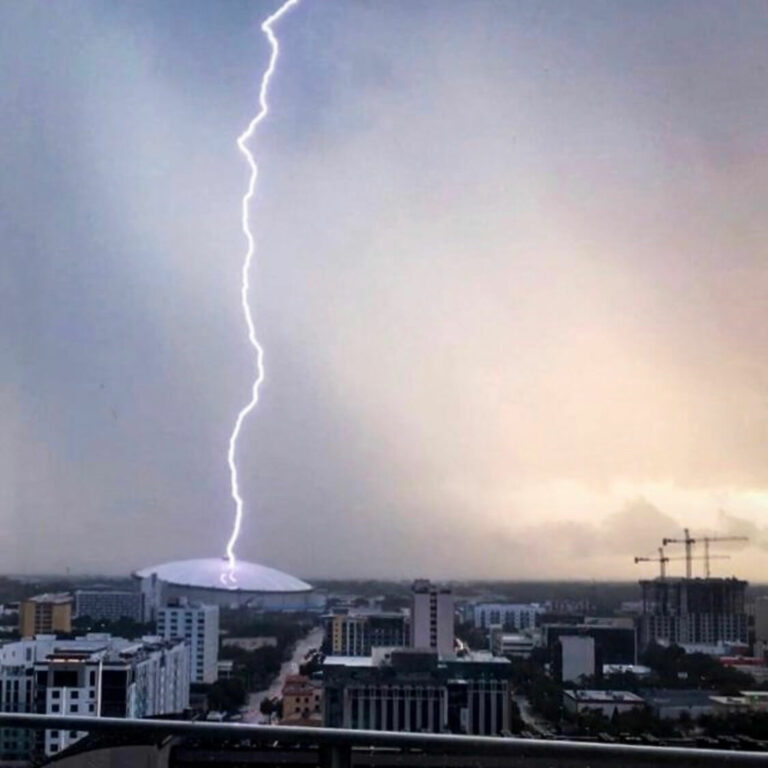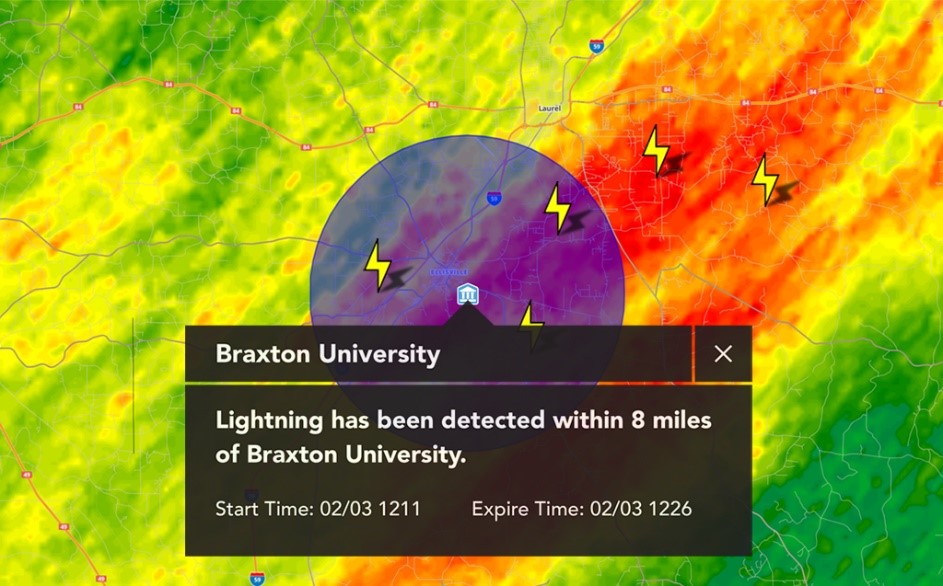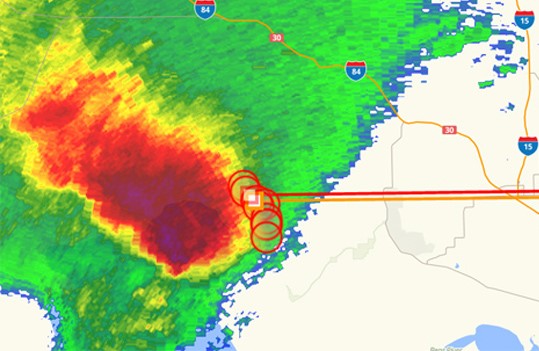Located on a peninsula between the Gulf of Mexico and Tampa Bay, Tropicana Field is in an area with unpredictable weather conditions. Thunderstorms can form quickly, replacing sunny skies. A small storm only takes ten minutes to expand and cover the entire county. Sometimes, half of the stadium may be sunny while the other half experiences a thunderstorm.

In September 2018, a Tampa Bay Rays vs. New York Yankees game attracted a large audience at Tropicana Field. However, during the game, lightning struck the stadium directly, causing a momentary power outage. The incident prompted a sense of urgency. This was not the first time Tropicana Field had experienced lightning complications, as a similar incident occurred in 2014, causing a 19-minute delay during an Orioles game.
Several thousand fans were still in the parking lot when the strike occurred. Some were in cars; others tried making their way to the stadium. In a crucial moment, stadium staff had to make important decisions that with limited information about the weather.
“We had to consider at that point the risk of allowing them to be outside in those kinds of conditions versus the risk of not screening them for security or moving security screening in the middle of a storm,” recounts Jim Previtera, Senior Director of Security and Stadium Operations for the Tampa Bay Rays.
The September lightning strike and a season of nasty storms prompted Tropicana Field leadership to seek a specific weather service solution for the stadium. Previtera served 31 years in law enforcement, including a stint in the U.S. Secret Service, before managing safety for the Rays. For him, several capabilities would be required to ensure safety.
“The ideal weather service provider for us had to be somebody that could provide us with real-time storm tracking capabilities at our fingertips where we could control what we’re looking at and we needed the ability to measure the threats posed by cloud-to-ground lightning. We live in what’s generally considered the lightning capital of the world.”
-- Jim Previtera, Senior Director of Security and Stadium Operations for the Tampa Bay Rays.
Specifically, Tropicana Field required information on storm location, probable path, storm arrival time, and if the storm path included the stadium. They also needed to know what threats a storm posed to the fans, the employees in the parking lot, and the facility itself.
When Previtera attended a Stadium Managers Association meeting, he attended with these objectives in mind. There, he met a Baron Weather team member, who demonstrated pulling up historical data for the stadium—from the day of the lightning strike. Lightning data is compiled from hundreds of lightning sensors nationwide that record lightning electric field waveforms. Within seconds, this data is integrated into and displayed on an interactive map showing users the location and the type of lightning strike. The service also tracks the path of storms with Baron Storm Track.
“He showed me what we would have seen had we been able to access Baron Threat Net back then, I knew right then and there that I had found the weather service I was looking for.”
-- Jim Previtera
Weather Data Improves Operational Decision-Making
Thousands of people enter and exit before and after every game or event at the facility. These crowds undergo systematic security checks at points of entry to the stadium. In severe weather, this process can take on increased danger. So, Previtera and his operations team must balance the importance of security checks with protecting people from harsh weather.

Before integrating weather service software into this decision, Tropicana Field relied on television and web-based forecasts that provided general weather information about the entire Tampa Bay area, sometimes at a significant delay. This generalized view led, in the past, to a degree of guesswork. Previtera says with Baron, “We can now zoom in on our facility and look at particular weather patterns or storm cells that we believe pose the greatest threat to us.” The increased level of detail adds information that often results in different decision-making.
Previtera receives a daily email with critical weather concerns in the area. Hours before the first pitch, Tropicana Field staff is already monitoring the weather to ensure there are no pop-up storms or summer shower surprises. If a storm builds, the team sees predictions of its direction and speed of movement. “We’ve encountered situations where we probably would have altered our entrance plans had we not had the abilities that we have through Baron,” Previtera says. When Baron determines that a storm will pass before the opening of gates and before fans mass at security checkpoints, the Tropicana Field operations team has confidence that there is no need to make any alterations to the standard checkpoint configuration. “That has saved us a lot of work and stress,” says Previtera.

Weather information also adds value to the domed stadium once people are indoors, as strong winds or a tornado could risk the stadium’s roof. A 2018 waterspout threatened to make landfall and wreak havoc on the structure, and high winds from hurricanes are another possibility. “Having the ability to identify wind patterns that could result in tornadoes is going to be crucial for us when we decide whether or not to stop a game and to move people to areas of refuge or safe shelter within the stadium,” Previtera says.
Better Weather Data Improves Relationships
Of course, the effects of improved decision-making through critical weather intelligence influence more than safety alone. Tropicana Field, like any stadium, functions through the collaboration of various stakeholders. Baron-informed decision-making bolsters these relationships. “We’re able to communicate better information about the weather, which has improved our relationship with people, especially security, parking, and police outside in the elements before a game,” remarks Previtera.
Previtera adds that the advanced capabilities strengthen the stadium’s relationship with baseball. “For MLB, they’ll hear about anticipated weather threats, and they’ll want to know what we’re doing to stay on top of the situation and to keep them informed,” Previtera explains, “and now we have that ability, and they know we have that ability.”
Baron Threat Net even improves the trust of players and coaches in the front office. As a mobile app, the service gives Previtera information on threatening weather in any city the team visits for an away game. It enables him to alert the team to any changes that could affect them.
The Tampa Bay Ray’s Preferred Weather Service
As fans exited the stadium after a 2014 NFL game in Tampa, at least seven people were injured by lightning. Tropicana Field trusts the speed, accuracy, ease-of-use, and specificity of Baron’s Weather Intelligence for a stadium in a location of extreme weather exposure. “The best thing for us has been having it in our command center, to have the ability to identify threatening lightning in real-time,” Previtera says. “My people are around me, and they’re easily navigating the software to provide me with critical information to make decisions that keep our fans safe. It impacts my decisions every day.”
